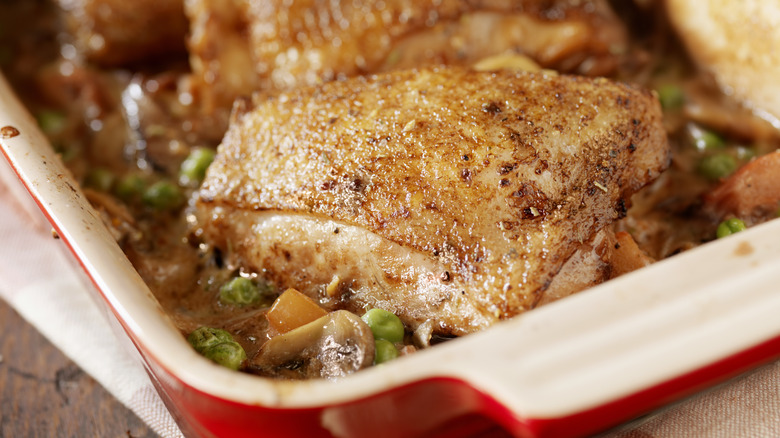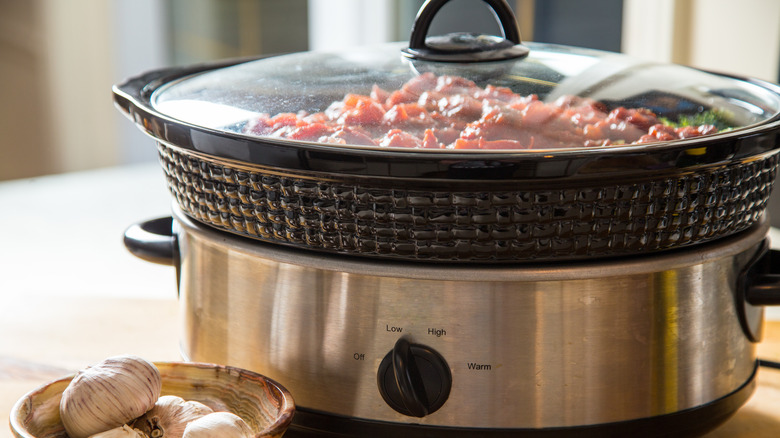How To Cook Any Chicken Dish In High Altitudes
Living at high altitudes means there are a few adjustments you need to make when cooking. Besides needing to fiddle with the balance of flour, liquid, and sugar when baking, there's the added complication of cooking meat — and cooking the perfect chicken can be especially tricky. But to find out why, a quick science lesson first.
The higher you go in altitude, the thinner the air — there's less oxygen, less moisture, and less atmospheric pressure. Due to these phenomena, water boils at a different temperature than at sea level. It reaches a boil at 212 degrees Fahrenheit at sea level, but this decreases by 1 degree for every 500 feet increase in altitude. So at 5,000 feet (considered "high altitude" by most cooks), water boils at 203 degrees Fahrenheit. And at 10,000 feet, it boils at 194 degrees Fahrenheit. What does this mean for your chicken? Well, if you're planning on braising, poaching, or steaming it, a lot.
Moist heat cooking methods are most affected by these changes in altitude. White chicken meat is around 69% water and the lower boiling temperatures mean more opportunities for bad bacteria to thrive. It also means a higher chance of serving undercooked meat if you follow the recipe's cooking times. To make up for this, increase the cooking time whenever you're using moist heat at high elevation — according to the USDA, plan for at least one quarter more cooking time. (And you should be using an instant-read meat thermometer to get the best measurement.)
Be mindful of deep frying or slow cooking your chicken at high altitudes
Luckily you don't need to worry about chicken cooked in an oven; oven temperatures aren't affected by altitude. You can just bake your chicken using the recommended time and temperature as a reference. However, it's more than just moist heat cooking that's affected by altitude — you'll also need to be mindful of deep frying and using your slow cooker. To begin with, make sure your chicken is prepared by fully defrosting it before cooking.
Because water has a lower boiling point at altitude, the temperature of your oil when frying needs to decrease. This is so you don't undercook your fried chicken while overcooking your breading. Colorado State University's FoodSmart program recommends lowering the temperature of the oil 3 degrees Fahrenheit for every 1,000 feet elevation increase. Then, increase cooking time appropriately, generally by one-fourth or until the chicken reaches a safe interior temperature.
If you're going to be cooking in a slow cooker, remember that it'll simmer at a lower temperature; this might prevent your slow cooker whole chicken from reaching a safe temperature. So, set it to 200 degrees Fahrenheit if possible, but if it only has high or low options, set it to high for the first hour and set it to low for the remaining cook time. And be aware that every time you remove the lid, it'll take around 20 minutes to rebuild lost heat and steam, so refrain from removing the lid.

